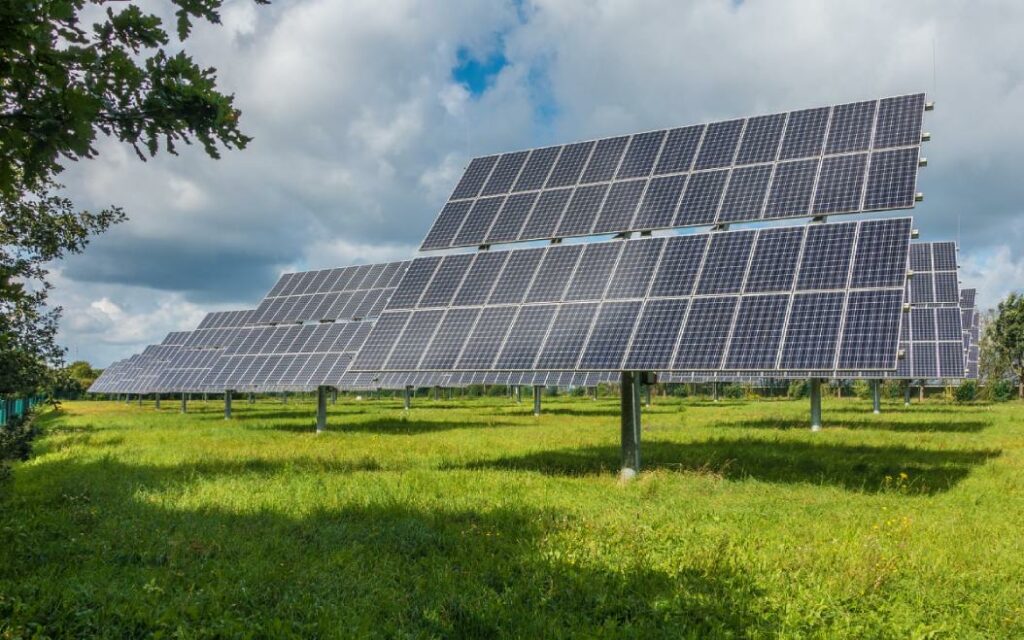
By imposing a six-month moratorium on large-scale wind and solar projects in the province, Alberta is trying to avoid what Ontario – and many places around the world – found out the hard way. Photo credit: University of Minnesota
Late last week, Alberta’s United Conservative Party government announced that it is imposing a six-month moratorium on large renewable energy projects in the province. The pause on wind and solar projects greater than one megawatt is a result of concerns in rural areas such as the effects on agricultural land, the impact on countryside scenery and the reliability of such projects. The Alberta Utilities Commission (AUC) will hold an inquiry into these issues and report back to the government at the end of February 2024. The AUC will also evaluate whether developers should pay a security amount for any future clean-up costs.
Considering that most wind and solar projects are promoted on the basis of green jobs and economic benefits that never appear, and costs that are never properly evaluated or publicized, this is a refreshing attempt by a government to do a cost-benefit analysis before proceeding with further projects of this kind.
Naturally the climate alarmists, mainstream media, and other commentators reacted with great distress, claiming that Alberta was seriously damaging its reputation, deterring foreign and domestic investment, and imposing a temporary halt on a growing economic sector. Kind of a strange reaction to a government wanting to undertake a proper review of projects instead of barreling ahead with them, spending copious taxpayer dollars in the process.
Yet unfortunately, that has been the approach with so many costly green projects to date, which is a slick huckster way of rushing such projects ahead before people are actually aware of the true picture. Remember the Ontario Green Energy Act which was supposed to cost a minimal amount to Ontario ratepayers, but ended up doubling hydro costs? That dishonest policy had a major negative impact on provincial competitiveness and introduced the concept of “energy poverty” to Ontario for the first time. And the province continues to suffer from that badly designed and dishonestly promoted policy to this day.
Additionally, a six-month delay to do a proper evaluation is not a big deal. Since the Trudeau government imposed a much more intrusive and complex regulatory regime for the oil and gas industry, proposed projects have experienced delays for years if they are ever approved at all. The imposition of ridiculous conditions such as the need to consider downstream emissions (when a business would have to guess what the energy generated is going to be used for in future) and such absurdities as gender equality considerations is a much greater deterrent to investment in our energy sector than a brief moratorium.
Some of the concerns from rural areas are based on the fact there has been relatively rapid growth in wind and solar installations in recent years. The main issues are the loss of farmland, noise caused by wind turbines and lack of clarity about who is responsible for the clean-up of abandoned sites.
The empirical evidence is also mixed for wind and solar. Alberta has experienced a number of “grid alerts” over the last year or so, when its citizens are asked to reduce their power consumption because of strains on the system. Some of these alerts happened in the dead of a cold winter, when lives could be at risk because of a lack of sufficient energy back-up capacity. Wind and solar power are notoriously unreliable and tend to be available when they are least needed. Now that many countries around the world have more familiarity with wind power, they have realized how destructive they are to bird and bat populations and that their components are largely non-recyclable. Japan has recently suspended a number of wind farm construction projects because of their threat to endangered birds.
Solar panels use up large swaths of rural land, leave much unrecyclable material once their useful lifespan is over and cannot operate when covered in snow as they often are in Canadian winters. Despite all of the original – and often dishonest – hype about how great wind and solar energy was going to be, the more experience people have with them has increasingly demonstrated their many failings. Many countries have moved away from wind and solar toward nuclear power which, although initially expensive, is reliable and consistent with current technology for small modular nuclear reactors being safe and more flexible than the former large nuclear facilities. As the demand for more electricity continues to grow across Canada, nuclear power is experiencing somewhat of a renaissance after years of neglect.
So, good for Alberta to initiate a more comprehensive look at all of the impacts of large wind and solar projects. Let’s hope this is the beginning of a trend for more provinces to stop and look at the many downsides of wind and solar power, and ensure there are at least some significant gains to be had after accounting for the costs. After all, someone has to be the first to tell the emperor he has no clothes.

She has published numerous articles in journals, magazines & other media on issues such as free trade, finance, entrepreneurship & women business owners. Ms. Swift is a past President of the Empire Club of Canada, a former Director of the CD Howe Institute, the Canadian Youth Business Foundation, SOS Children’s Villages, past President of the International Small Business Congress and current Director of the Fraser Institute. She was cited in 2003 & 2012 as one of the most powerful women in Canada by the Women’s Executive Network & is a recipient of the Queen’s Silver & Gold Jubilee medals.


















